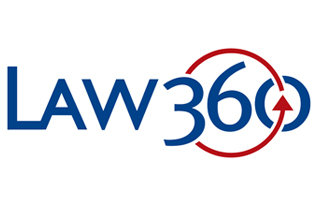As a novice skier, imagine the terror I experienced at the moment the ski lift dropped me off at the top of a black diamond run. The wind was howling, visibility was poor, and before I could get my bearings, my two ski companions yelled, “See ya at the bottom!”
My mind raced as I considered how I ended up in such a quandary. I started to sweat. My thoughts were, “How am I going to get down this mountain and in one piece? What if I fall, loose a ski, or another skier runs me over?”
Fear was setting in, but I had the sense of mind to know that panicking wouldn’t get me anywhere. I considered my options.
I knew enough about skiing to know that I could get down the mountain through slow, horizontal patterns. It would take a while, but I would be in control. Instead of wondering how I would finish the entire ski run, I compartmentalized the mountain and only thought about one section at a time. If all else failed, I could remove my skis and walk down the mountain.
I was relieved that I had an action plan.
During a recent strategy meeting with my friend Jerry as to ways he could increase his business development efforts, I went through my mental checklist with him of activities that spawn business—client visits, cross-selling other areas of the law firm, actively participating in networking groups, etc., and I inquired as to Jerry’s involvement in social media.
Aside from having a mostly static LinkedIn profile, Jerry admittedly was not otherwise active online. He didn’t grow up tweeting, updating his Facebook status, participating in online discussion groups, or blogging. Social media wasn’t a natural vehicle for Jerry to communicate and stay connected with other professionals.
Through our discussion, it became obvious that Jerry felt as anxious and unfamiliar about how to leverage social media as I had felt as a novice skier atop a black diamond run. His concerns included, “Why would someone else want to “follow” me or care what I have to say? How much time is it going to take? What content should I be sharing and how often? Which platform should I employ? Should I only accept “friend” requests from others I know well? And the mother load question, how does any of this online activity lead to generating business?”
I explained that an active online presence will expose Jerry’s personal brand to a greater number of professionals. Being a great lawyer will only get Jerry so far. The future growth of his business lies in his ability expand his influence through the use of social media.
Consider the following social media best practices:
1–Understand that social media is here to stay. Use the energy you would normally expend trying to avoid social media to embrace it. Similar to my black diamond run experience, the territory might be unfamiliar and the visibility poor, but develop an action plan and move forward.
2–Don’t panic; take one step at a time. Choose one, maybe two social media platforms, and set aside 20 minutes a day to participate. Share with your network anything of interest to you, whether you originated the content or not–articles, quotes, blog posts, news items, event notices, etc. Not everything you share has to be business related. If it interests you, others will also be interested. Social media is about the relationships, not the medium.
For business, I prefer LinkedIn and Twitter. If you’re unsure which social media outlet(s) is right for you, ask your clients and referral sources which outlets they use and start there.
3–The more you put in, the more you’ll get out. The more visible you are online, the more others within your network will become familiar with you and your shared interests. Knowing you leads to people liking you, which leads to people trusting you with their business and contacts.
4–Be less exclusive, more inclusive. All social media platforms have some mechanism for connecting with people you know. Most platforms will also suggest individuals who you should know. A few times a month, review those suggestions and connect with individuals who may influence your business. When someone requests to connect, accept it unless it appears to be spam.
5–Listen with your eyes. Keep in tune with the latest issues and topics that matter most to your industry and your world. Following prospects on LinkedIn or Twitter will provide you with insight into who they are, what they deem important, and how you can relate.
In the words of Scottish novelist Robert Louis Stevenson, “Don’t judge each day by the harvest you reap but by the seeds that you plant.”
Social media seeds you plant today will have a great impact on your business tomorrow.

















